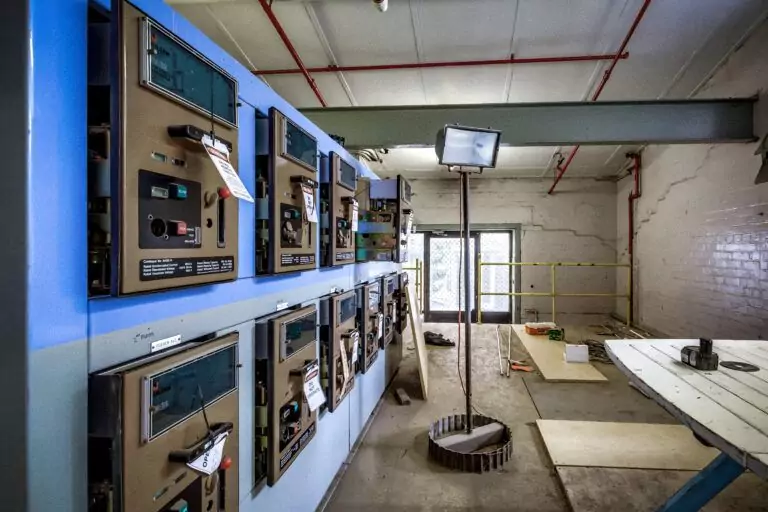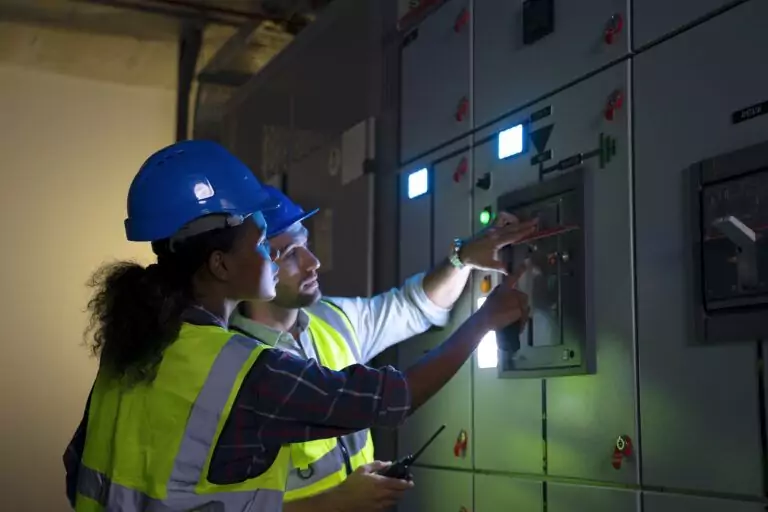Have you ever wondered about the magic behind the electrical systems that power our homes, offices, and factories? It’s not just a flick of a switch; there’s a complex, well-thought-out design behind it, crafted by the unsung heroes of the engineering world: electrical designers. These professionals are the masterminds behind the efficient, safe, and compliant electrical systems that light up our lives.
From drafting detailed diagrams to ensuring that every wire and circuit breaker meets code, electrical designers do it all. They work closely with architects and engineers, blending technical expertise with creativity to bring electrical systems to life. Whether it’s a cosy home, a bustling office building, or an industrial complex, electrical designers ensure that the power flows safely and efficiently.
So, let’s dive into the electrifying world of electrical designers and explore the diverse roles in electrical design that make this field so essential to our modern world.
Primary Roles of an Electrical Designer
Electrical designers play a crucial role in the planning and development of electrical systems across various settings, including residential, commercial, and industrial projects. Their primary responsibilities focus on ensuring that electrical systems are efficient, safe, and compliant with all relevant regulatory standards. One of the main tasks of an electrical designer is to develop electrical schematics and layout drawings.
These drawings accurately represent the electrical system’s components and circuitry, involving the selection of appropriate materials and components, such as wiring, transformers, circuit breakers, and other electrical equipment, based on the project’s specific needs and requirements. Another vital role is performing calculations to determine the correct sizing and specifications of these components. This ensures they can handle the expected electrical loads safely and efficiently.
Designing Electrical Systems
Designing electrical systems encompasses a critical and intricate process that spans various environments, including residential, commercial, and industrial projects. This multifaceted process is foundational in ensuring that electrical systems are efficient, safe, and tailored to meet the specific needs of each project.
Creating Detailed Electrical Diagrams
At the heart of designing these systems is the creation of detailed electrical diagrams. These diagrams serve as the comprehensive blueprint of the electrical system as a whole, guiding every step of the installation and integration process. They include:
- Schematic Diagrams: These provide a conceptual layout, offering a simplified view of the electrical system to highlight the flow and connections between different components.
- Wiring Diagrams: Focused on connections and circuits, these diagrams detail the wiring between components, ensuring that every connection is accurately represented and documented.
- Layout Diagrams: Offering a bird’s-eye view of the physical placement of components, layout diagrams facilitate planning the spatial arrangement within the project, ensuring that every piece fits perfectly in its designated space.
Ensuring Compliance with Codes
A pivotal aspect of designing electrical systems is ensuring compliance with codes. This involves a thorough understanding and application of both national and local electrical codes. These codes are not just regulatory requirements; they are integral to the design process, ensuring that every electrical system is up to the mark in terms of safety, efficiency, and reliability.
Compliance with these codes ensures that the designed electrical systems are not only safe for end-users but also meet the stringent standards set forth for electrical safety and performance. This meticulous adherence to codes is crucial for passing inspections, avoiding legal and safety implications, and ultimately, for the successful implementation of the electrical system within the project. The role of electrical designers is thus central, requiring a blend of technical expertise, creativity, and a deep understanding of regulatory codes to develop electrical systems that meet the project’s needs while ensuring safety and compliance.
Specific Duties of an Electrical Designer
The specific duties of an electrical designer are critical in ensuring the successful implementation and functionality of electrical systems across various projects. These responsibilities are detailed and require a high level of expertise and precision.
These duties underscore the complexity and importance of the electrical designer’s role in modern construction and development projects, highlighting their contribution to creating safe, efficient, and compliant electrical systems.
Analysing Electrical Requirements
Analysing electrical requirements is the first step in ensuring a project’s electrical system is designed to meet its specific needs. This involves detailed load calculations and assessing energy consumption to match the system’s capacity with demand accurately.
Developing Electrical Layouts
Developing electrical layouts is key to ensuring the efficient and safe placement of outlets, fixtures, and switches. These layouts are crucial for achieving optimal functionality and ensuring compliance with safety standards.
Placement of Outlets, Fixtures, and Switches
The placement of outlets, fixtures, and switches is meticulously planned to ensure accessibility, convenience, and safety. This careful planning is part of developing effective electrical layouts.
Selecting Electrical Components
Selecting electrical components such as transformers, circuit breakers, and panels is critical. These components must be chosen based on their ability to meet the project’s specific requirements, ensuring the system’s reliability and safety.
Collaborating with Professionals
Collaborating with professionals like engineers, architects, and project managers is essential for integrating the electrical design with the overall project plan. This collaboration ensures a cohesive and functional outcome.
Modifying Designs Based on Feedback
Modifying designs based on feedback is a crucial step in refining the electrical system. This includes making revisions for efficiency and code compliance, ensuring the final design meets all requirements and standards.
Essential Skills for Electrical Designers
Electrical designers require a specific combination of technical competencies and cognitive abilities to excel in creating safe, compliant electrical systems. The following core skills form the foundation for success in this demanding field, enabling designers to navigate complex projects while meeting stringent industry standards.
Proficiency in CAD Software
Electrical designers must possess proficiency in CAD software, which is indispensable for drafting precise electrical diagrams. Mastery of tools such as AutoCAD, Revit, and SolidWorks is essential for this aspect of their work.
Knowledge of Electrical Codes
A thorough knowledge of electrical codes is critical. Familiarity with standards such as the NEC (National Electrical Code) and IEC (International Electrotechnical Commission), as well as other relevant standards, ensures that designs adhere to the latest safety and regulatory requirements.
Problem-Solving Abilities
Problem-solving abilities stand out as a fundamental skill. Electrical designers are often faced with complex challenges that require innovative solutions to ensure the efficiency and effectiveness of electrical systems.
Analytical and Critical Thinking Skills
The role of an electrical designer also demands strong analytical and critical thinking skills. These abilities are crucial for evaluating systems, identifying potential issues, and implementing solutions that optimise for efficiency, reliability, and compliance with all applicable codes and standards.
Industries Employing Electrical Designers
Electrical designers are integral to a wide array of industries, each presenting distinct requirements and challenges. These industries underscore the indispensable role of electrical designers in creating and maintaining the foundational systems that power our world, highlighting the significance of their contributions across various sectors.
Construction and Building Services
In construction and building services, electrical designers ensure that electrical systems within residential and commercial construction are not only efficient and safe but also adhere to all relevant codes and standards.
Manufacturing and Automotive
Within the manufacturing and automotive industries, electrical designers play a crucial role in advancing product design and optimising factory layouts. Their expertise is crucial for improving production efficiency and ensuring operational safety.
Power Generation and Distribution
Electrical designers also significantly contribute to power generation and distribution, working closely with renewable energy and utility companies. They focus on developing robust and sustainable infrastructure for energy delivery.
Becoming an Electrical Designer
To embark on a career as an electrical designer, one must first pursue a relevant degree in fields such as electrical engineering or technology. This educational foundation is critical for acquiring the necessary theoretical knowledge. Gaining practical experience is equally crucial.
This is typically achieved through internships in design or engineering firms, where aspiring designers can apply their knowledge in real-world settings and gain invaluable insights into the practical aspects of electrical design. Continual learning is a hallmark of successful electrical designers. Updating skills and knowledge through continuing education and professional certifications ensures that designers remain current with the latest industry standards, technologies, and codes.
This commitment to professional growth not only enhances technical capabilities but also ensures adaptability in a rapidly evolving field.
Obtain a Relevant Degree
Embark on your career by obtaining a relevant degree in fields such as electrical engineering or technology. This crucial first step lays the educational foundation necessary for success in the field.
Gain Experience
Enhance your theoretical knowledge by gaining experience through internships in design or engineering firms. These opportunities provide practical insights and real-world applications of electrical design principles.
Update Skills and Knowledge
Commit to updating skills and knowledge by engaging in continuing education and pursuing professional certifications. This ongoing learning process ensures you remain at the forefront of industry standards, technologies, and practices.
Designing the Electrical Future
Electrical designers are the technical architects behind safe, efficient electrical systems, creating detailed schematics and layouts while ensuring compliance with national and local electrical codes. Their expertise spans analysing electrical requirements, selecting appropriate components, and collaborating with multidisciplinary teams across construction, manufacturing, and power generation industries. Success in this field requires proficiency in CAD software, a deep understanding of electrical codes, and strong analytical problem-solving abilities, combined with continuous learning to stay current with evolving technologies.
Vista Projects integrates skilled electrical designers within our comprehensive engineering teams to deliver code-compliant, efficient electrical solutions across diverse industrial sectors. Our collaborative approach ensures that electrical design seamlessly integrates with mechanical, civil, and instrumentation disciplines, optimising both performance and installation costs for our clients.
Ready to bring your electrical design vision to life with expert precision? Contact Vista Projects today to discover how our integrated electrical design services can power your project’s success.









